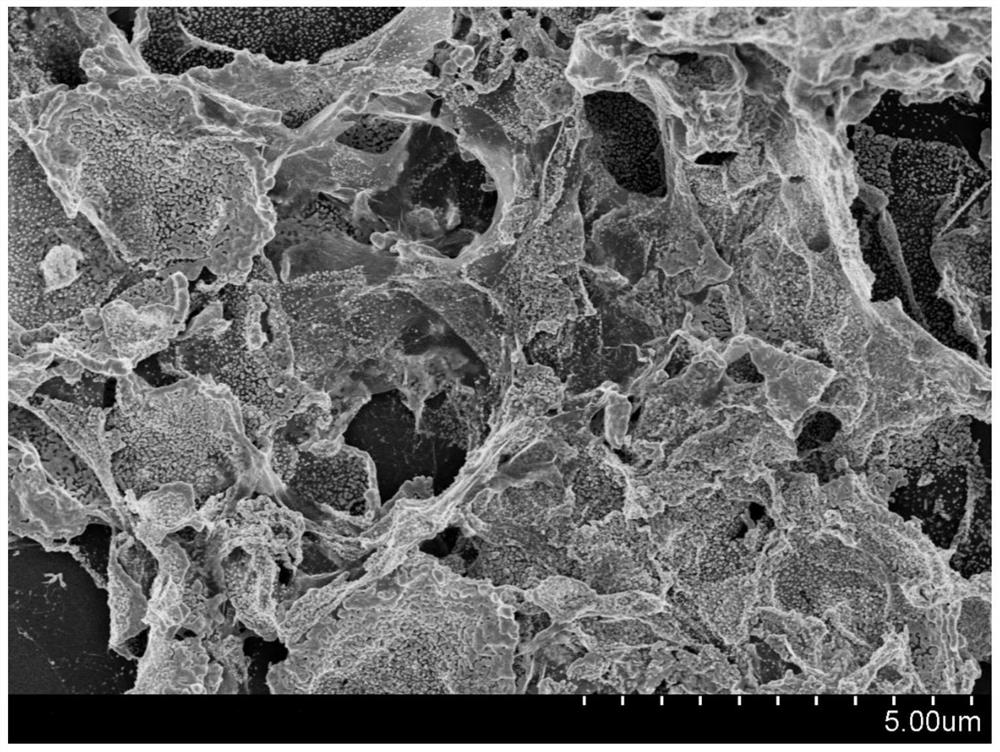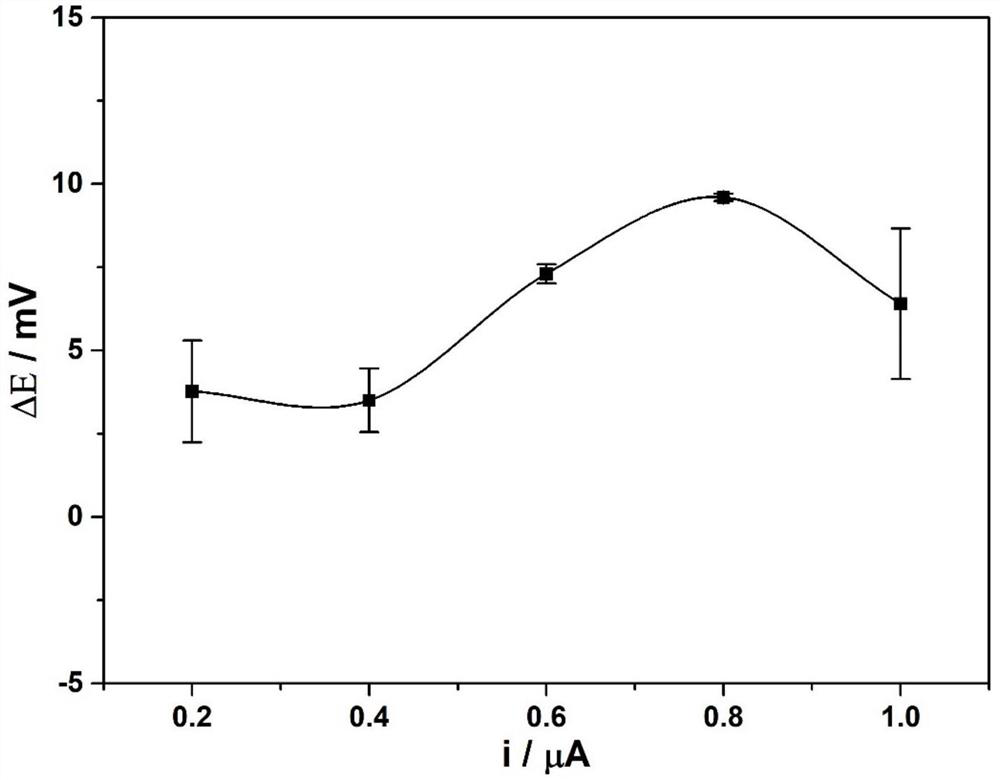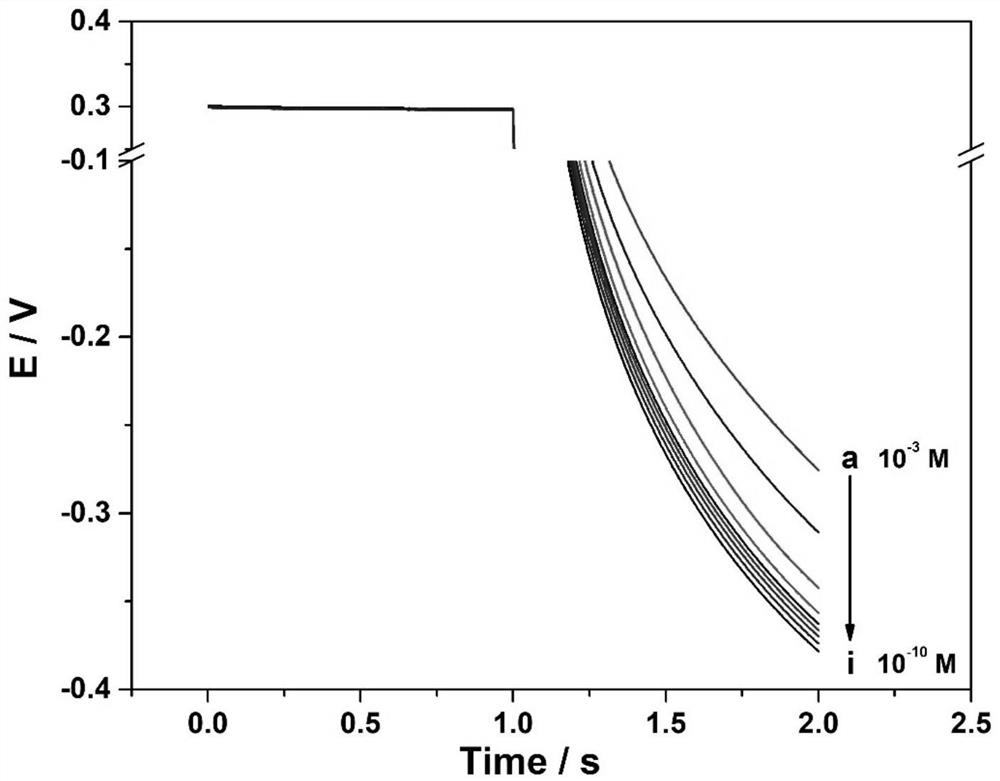Thin-layer polymer membrane ion selective electrode based on pulse constant current control and detection method
A technology of ion selectivity and detection method, which is applied in the field of thin-layer polymer sensitive membrane solid contact ion-selective electrode and detection, can solve the problems of tedious controllability and time-consuming, achieve strong controllability and improve detection Efficiency and ease of operation
- Summary
- Abstract
- Description
- Claims
- Application Information
AI Technical Summary
Problems solved by technology
Method used
Image
Examples
Embodiment 1
[0035] The specific preparation steps of the thin-layer polymer sensitive membrane solid contact copper ion selective electrode are as follows:
[0036] a. Preparation of sensitive film solution: a mixture of PVC particles, o-nitrophenyl octyl ether, copper ionophore and tetradecylammonium tetrakis(4-chlorophenyl)borate totals 250 mg, of which 29.7 wt% of PVC particles, 59.3wt% o-nitrophenyl octyl ether, 1.0wt% copper ionophore and 10wt% tetradecylammonium tetrakis(4-chlorophenyl)borate were transferred into 2.5ml tetrahydrofuran solution, ultrasonicated and stirred for 2h to disperse evenly. Then take 50 μl of the original polymer sensitive membrane solution and dilute it into 1 ml of tetrahydrofuran solution to obtain the final ready-to-use sensitive membrane solution.
[0037] b. Preparation of solid contact layer: prepared by one-step electrochemical co-reduction of graphene oxide and chloroplatinic acid on the surface of a conductive substrate by cyclic voltammetry using...
Embodiment 2
[0044] The reuse steps of the thin-layer polymer-sensitive membrane solid-contact copper ion selective electrode are as follows:
[0045] a. The preparation and implementation steps of the sensitive film solution are carried out with reference to step a of Example 1.
[0046] b. The preparation and implementation steps of the solid contact layer are carried out with reference to step b of Example 1.
[0047] c. Preparation of thin-layer polymer-sensitive membrane solid-contact polymer-membrane copper ion-selective electrode and activation implementation steps are carried out with reference to step c of Example 1.
[0048] d. After applying a current pulse of 1s and 0.8μA, continue to apply a potential baseline pulse to investigate that the concentration is 10 -3 M Cu 2+ The reversibility of the potential response was tested in four replicates. The result is as Figure 4 As shown in the figure, from left to right in the figure are the chronopotentials after four times of pu...
Embodiment 3
[0050] The specific preparation steps of the thin-layer polymer sensitive membrane solid contact calcium ion selective electrode are as follows:
[0051] a. Calcium ionophore is used in the preparation of the sensitive membrane solution, and the rest of the implementation steps are carried out with reference to step a of Example 1.
[0052] b. Implementation steps are carried out with reference to Step b and Example 2 of Example 1, and a thin-layer polymer-sensitive membrane solid-contact calcium ion-selective electrode can be obtained.
[0053] c. The implementation steps were carried out with reference to step c of Example 1 and Example 2, and the influence of the applied pulse current size and time on the detection of calcium ions by the solid contact ion selective electrode of the thin-layer polymer sensitive membrane was investigated.
[0054] d. Determination of 10 under the background condition of 0.5M sodium chloride -3 -10 -7 Calcium ion chronopotentiodynamic respon...
PUM
| Property | Measurement | Unit |
|---|---|---|
| thickness | aaaaa | aaaaa |
Abstract
Description
Claims
Application Information
 Login to View More
Login to View More - R&D
- Intellectual Property
- Life Sciences
- Materials
- Tech Scout
- Unparalleled Data Quality
- Higher Quality Content
- 60% Fewer Hallucinations
Browse by: Latest US Patents, China's latest patents, Technical Efficacy Thesaurus, Application Domain, Technology Topic, Popular Technical Reports.
© 2025 PatSnap. All rights reserved.Legal|Privacy policy|Modern Slavery Act Transparency Statement|Sitemap|About US| Contact US: help@patsnap.com



